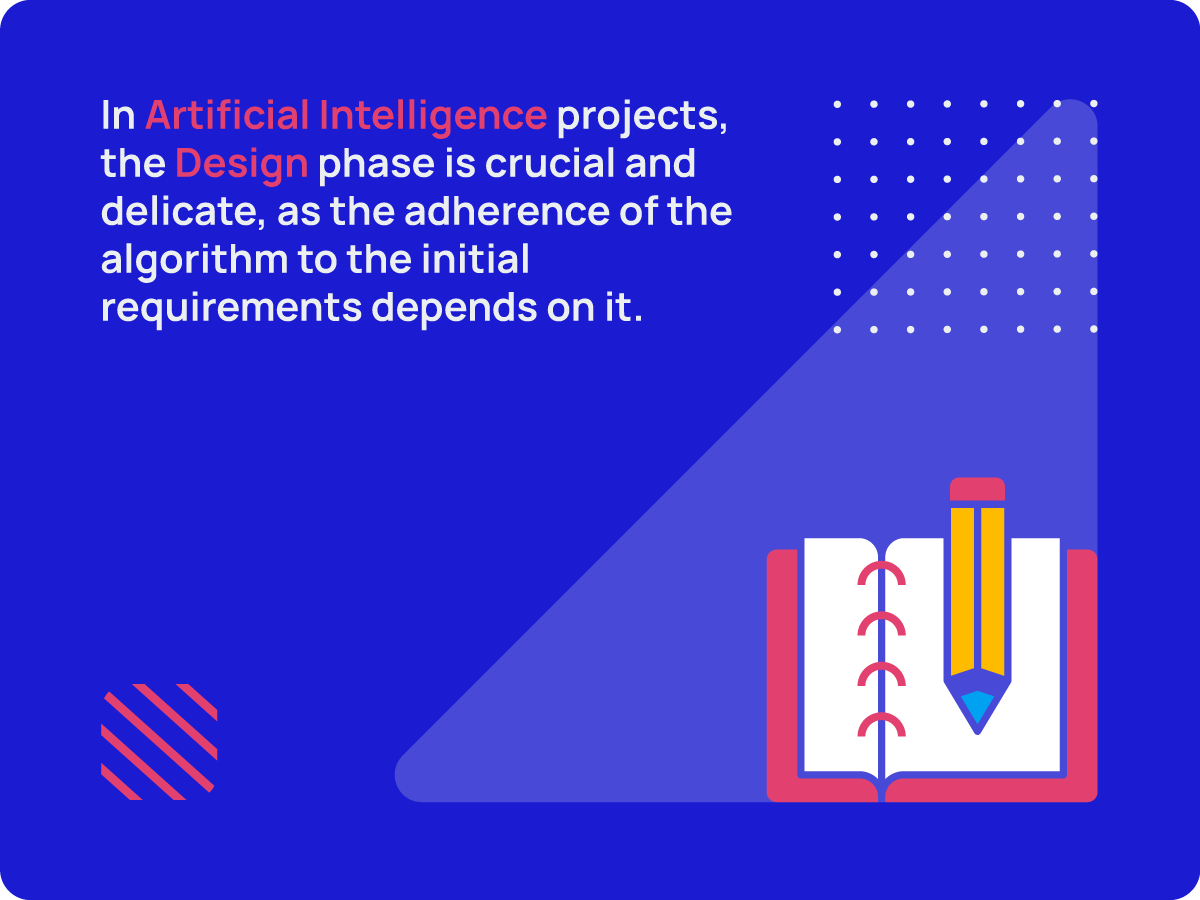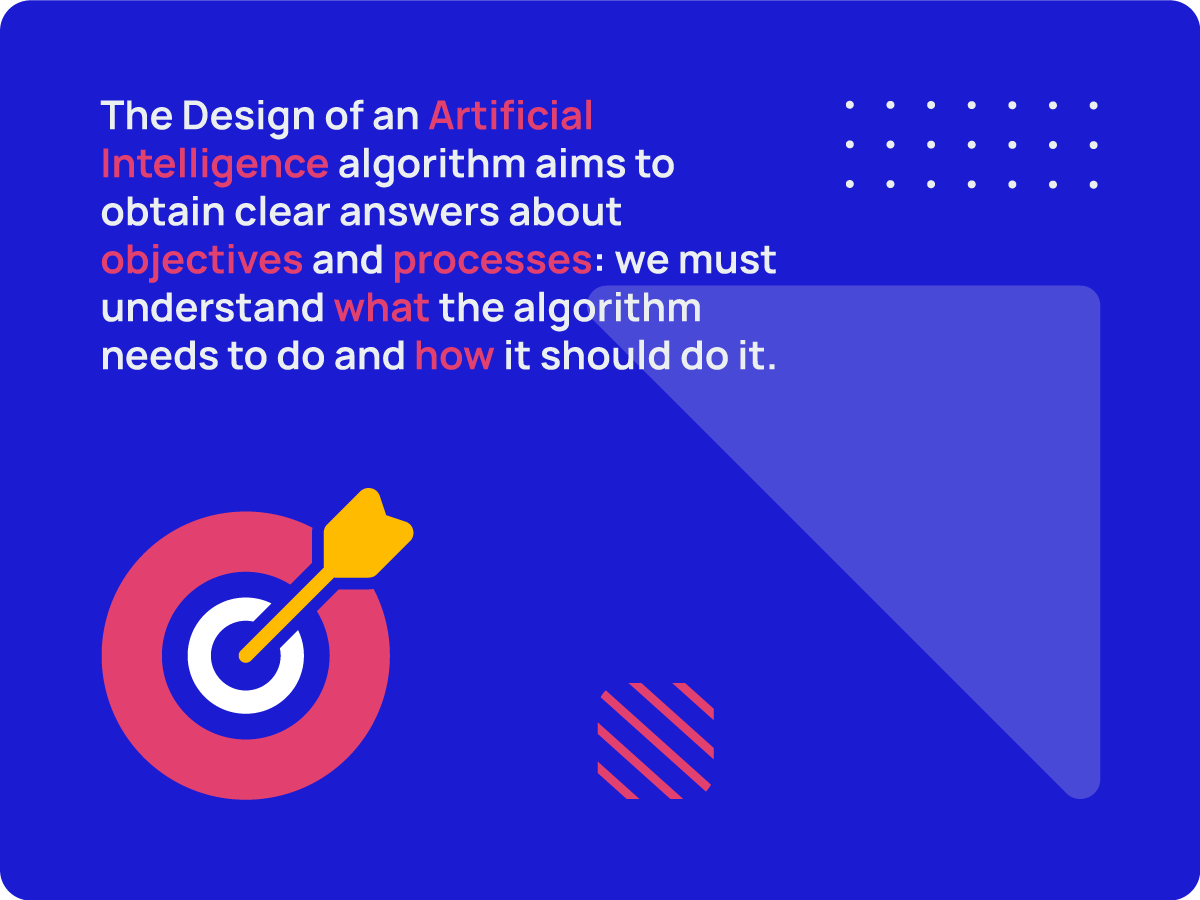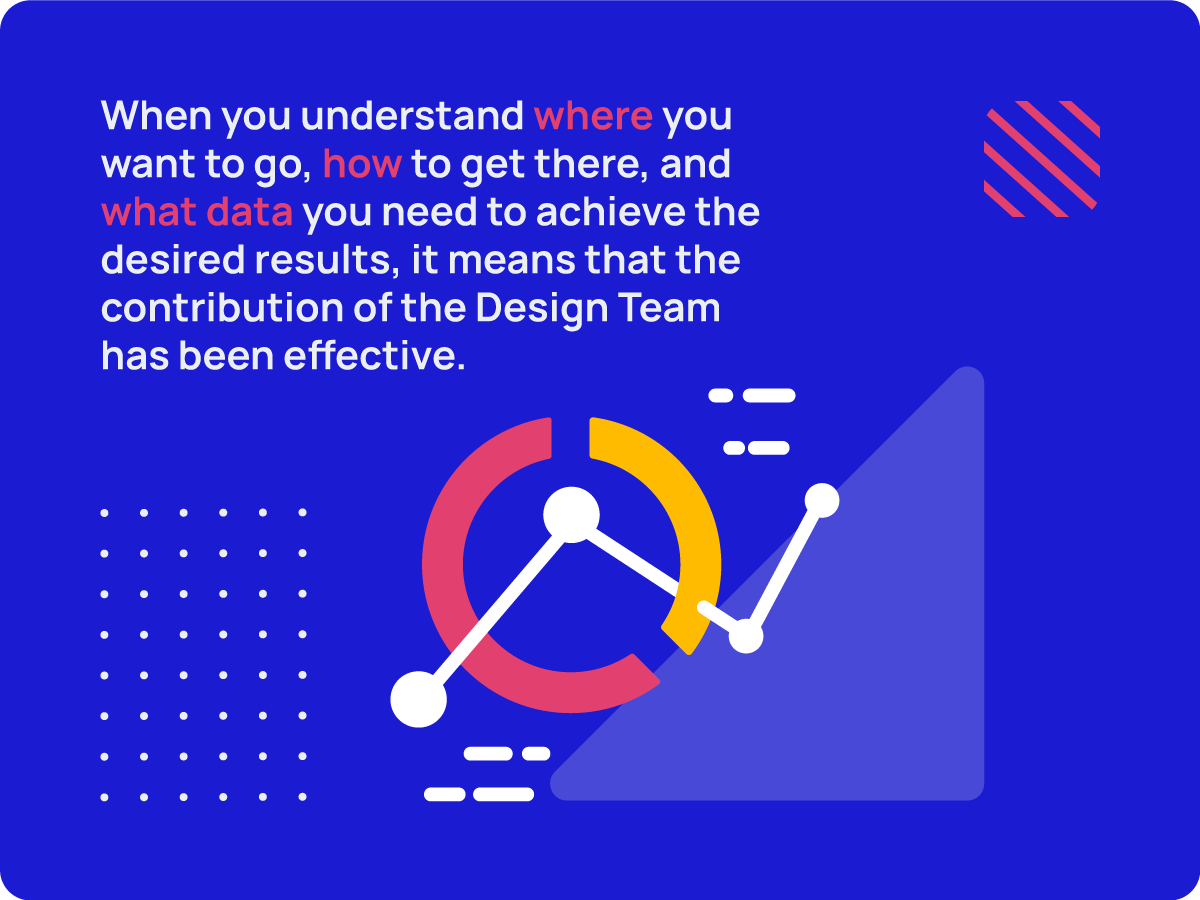When developing an AI algorithms it is crucial to know what we want to achieve.
To Design AI Algorithms, we need to study the customer’s context, his/her business objectives, and the process that the software will follow to achieve them.
At Uqido, we develop AI algorithms that respond to specific business objectives.
For instance, if a company needs to automate its product quality control system, we can create an algorithm capable of analyzing product images and determining whether they meet the standards. Alternatively, if a company needs to scale its operations or infrastructure, we can develop an algorithm that uses mathematical and physical models to meet the demand.
To achieve such outcomes, the role of the Design process is delicate and indispensable.

What is the contribution of Design in AI software?
For an AI algorithm to function, it is necessary to define in great detail the desired outcomes it should achieve and how it should operate.
As we mentioned in the previous chapter – Define your AI Software:
“The foundations of an AI project must be solid, extensive, and based on a clear vision of what you want to achieve in the future. The clearer our starting points, the better the system we will create.”
The role of Design is crucial as it questions the client to gather essential information about the algorithm to develop.
With the right questions, we design effective AI systems
To create an AI algorithm, it is essential to meet two conditions:
- Focus on the objectives that the algorithm must achieve,
- Define precisely how the algorithm should operate.
Clarifying Objectives
When we manage a project involving the use and implementation of an AI algorithm, the first step is to guide the client to identify the objectives the algorithm must pursue. A clear vision of the desired outcome is crucial because we are the only one enabling the machines to lead us in the right direction. In other words, it is our duty to instruct the system on what to do and how to do it.

The Design phase is, therefore, focused on bringing clarity. It implies investigating the client’s context, exploring their needs, and, most importantly, understanding the resources they have at their disposal.
Defining expectations, outcomes, and desires is always the most challenging activity.
Focusing on the process
In Artificial Intelligence projects, we have to design the process that will bring the algorithm to achieve the results. In other words, we must know what logic it needs to learn, which data it must analyze, and what parameters it should consider.

Answering these questions allows us to precisely define how the algorithm will process inputs, transforming them into the desired outputs.
Since we clarified the objectives, it will be easier to identify which data is required for the machine to achieve the intended results.
However, it is essential to remember that the selection of data, such as the definition of how the algorithm should transform them into outputs, is guided by means of quality and quantity. In other words, the more relevant data we provide to the algorithm, the better the generated answer will be.
The Design team lays the foundations for an Artificial Intelligence software. Afterward, we move on to the development phase, where the Dev team implements and trains the algorithm to manipulate the given data.
